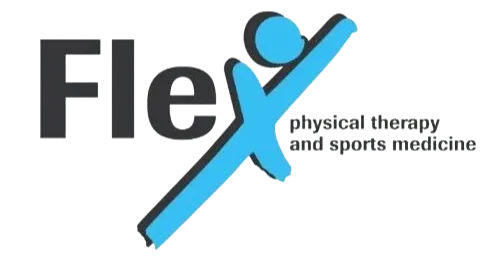Hey everybody Mike Uhrlaub with another episode of Power Your Life. We have previously discussed several movements that will help heal your back pain. Today we are going to go over two more movements that improve your muscles strength and reduce back pain. But before we dive in I wanted to tell you about something that happened last week. This past July I started jogging again. Prior, I hadn’t jogged since 1992 when I was on active duty; That’s 28 years ago! It had been a long time and I just got the idea to start again. I wanted to get in better shape and help keep the weight off. I eat a low carb diet and do intermittent fasting but felt like I needed to do more. So, I started jogging. Well, last week I decided to change up my jogging route.
I mapped out a route around my neighborhood. When you do that in the summertime, you don’t have to worry about what’s going on with the daylight. I could start jogging at seven or eight o’clock at night and it wasn’t a problem. Well, it’s become more difficult to get my run in since it’s starting to get dark by five o’clock. Part of my route was on a highway and going up a hill over some gravel roads.
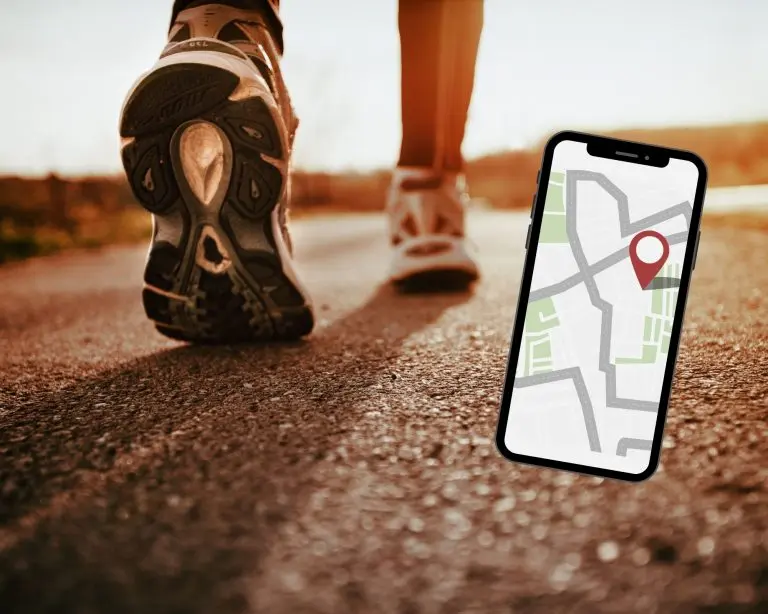
A New Route
I realized it’s not safe to take that route in the dark anymore. So, I went and mapped a new route to keep me in town and on lighted streets. I didn’t think it would be too hard of a route to jog because it had less hills in it than my current route.
On the first day of my new route, I found myself struggling to finish! My pace was off and my mental focus was not where it needed to be in order to help me push through those difficult times; I just kept thinking “this should not be that hard.”
As I was struggling to finish the last quarter mile, I finally acknowledged it was really hard. I managed to finish and thought about it for the next couple of days asking myself, “why was that so hard for me?” I concluded that when I changed the route, it changed everything about my run. Not only was the route different, but every part of the run I was used to had changed; That is what made it so hard for me.
Change is often difficult for all of us. Let’s face it, we are creatures of habit and most of us don’t like to change things in our routine or lives. But I’ve come to realize change is the catalyst that forces us to grow.
Change is Necessary for Growth
After I got out of the service from the Army in 1992, I got into the sport of powerlifting and weight training. One of the things I noticed when I found a workout routine that was successful for me, I would just keep it the same. But overtime my progress would stop. My body would get used to the workout and weights so I wasn’t building muscle anymore. My lifts would start to get weaker and the harder I pushed, the worse it got. I had more and more trouble lifting the same weights!
As I continued to workout I became more experienced and learned how to change up my workouts; Try different lists, sets, and reps. I started to change my routine when I felt stagnant and my progress always picked back up. I realized the body needs change in order to progress. Our lives are no different, change causes growth. Let’s face it, growth hurts and most of us are programmed to avoid pain.
So, what do we do? We avoid change. Yet, when we avoid change, we fail to grow like we should. We’ve all heard the definition of insanity, right? Insanity is doing the same thing over and over again expecting different results. Well, when you are doing the same routine over and over again, that is a form of insanity! It doesn’t matter what part your life you’re focusing; Physical, emotional, professional, or spiritual, you must have change in order to make progress.
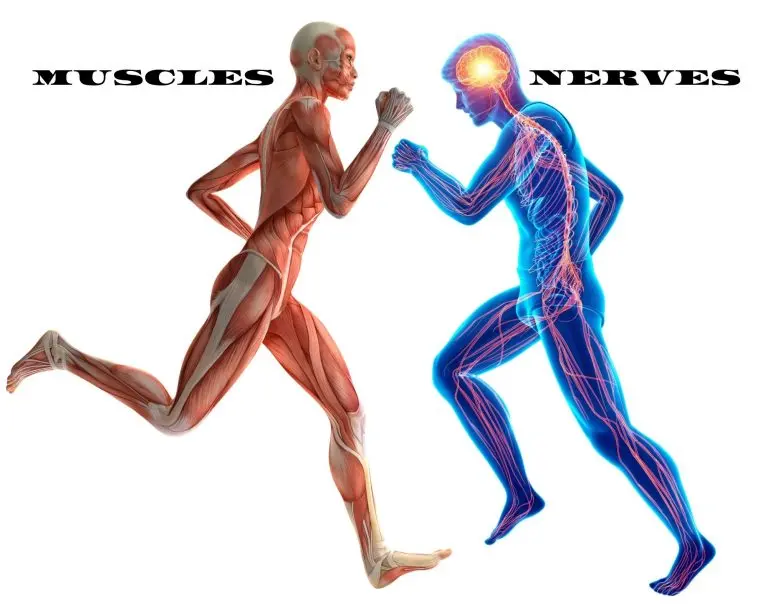
Don’t fear change, it’s a necessary part of life.
With that being said… Let’s get to work on movements that will change your back pain!
As we talked about in previous episodes, movements that heal back pain are ones that hit all of the key muscle groups contributing to back issues. They have to work multiple muscle groups at the same time, prime your nervous system. and are capable of creating structural change within your body.
Today we are going to work on two movements that will prime your nervous system.
What is Priming Your Nervous System Anyway?
Example: You know how your computer has a motherboard, right? It runs all of the functions on your computer. Your body and central nervous system are just like a computer. Your brain and spinal cord is basically the motherboard for your body.
The brain will send electrical signals by passing them down the spinal cord. The spinal cord transfers them to the nerves which sends them to the muscles. Then, those muscles are activated and movement is produced. This all happens in milliseconds! Bam! So fast it’s really amazing when you think about it.
Another way to think of it is as a hiking trail through the woods. The more the trail is used, the more visible it is. There are fewer things growing over the path blocking the way. You can tell the difference between a trail used all of the time verse one that is hardly ever used. You got things grown over and can’t even tell where you’re going.
Rebuilding Your Trails
We refer to these electrical pathways as a hiking trail. The more you use them, the more natural your movement becomes; Hence a well-used trail. This is how you learn a new movement or skill. When you use a new movement or skill, it feels awkward and uncoordinated. That’s because the hiking trail from your motherboard is not well-developed due to lack of use. The more you use it and practice, the better it gets. Priming your nervous system helps this process. Just like you would warm your muscles up before a workout, you need to warm up your nervous system. You need to start firing the nerve endings and movement of the signals to prepare your body for a workout.
Breathing is a very important part of this process. It has been proven that breathing patters have a direct influence activating the nervous system. If you have questions on the proper breathing, visit my episode on the proper way to breath here.
Before we go into these two movements, let’s review the principles of multifunctional movement.
Principles of Multifunctional Movement
- Never hold your breath. I just finished sharing how breathing is important. It activates and primes your nervous system. Never hold your breath!
- Always keep your abdominal muscles and midsection engaged. Just tighten them by pulling your belly button in towards your spine
- Never force into your primary pain. Muscle soreness may be created from the movement, but if your primary pain levels increase, stop. Primary Pain is the day-to-day back pain. Put a number on your daily back pain and if that increases after these exercises, stop. Do not go above two points of your normal primary pain. A correct movement will decrease the pain, not make it worse.
- Make sure you challenge yourself. Once you get the movement down and feel really good with it, work it to the point where you feel, at LEAST, 40% challenged. If you’re not, it’s pointless and you won’t gain much from it.
The two movements we are going to work on today will start priming your nervous system. The first one is called Swing Kicks. The second is a yoga pose called the Warrior One.
Swing Kick
A dynamic stretch warmup exercise that actively helps stretch your hamstrings and hip flexors.
- Works your core and improves balance.
- Set yourself up in a running position with your hands in a fist; You will essentially be in a defensive boxing position. You want to make sure you have a slight bend in your knees.
- Start out with a set of 10 on each leg repeating the set twice.
- Remember to keep your belly button in so you engage your core.
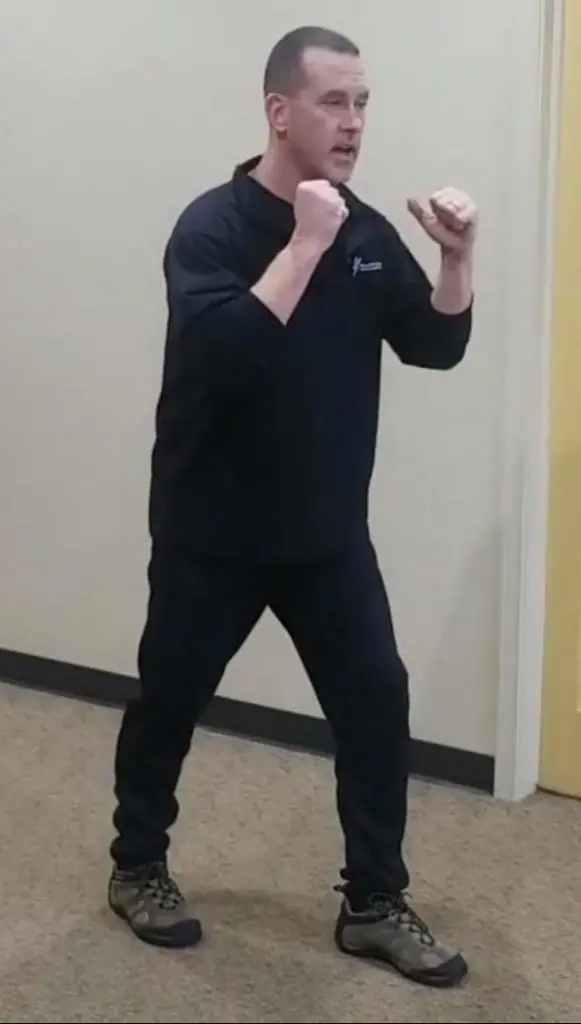
Step 1:
Set yourself up in a running position with your hands in a fist, one leg forward and one leg back; You will essentially be in a defensive boxing position. You want to make sure you have a slight bend in your knees.
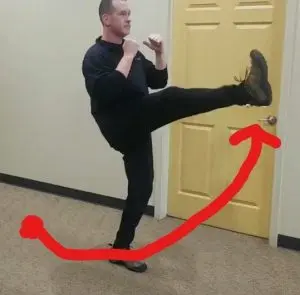
Step Two:
Engage your core, take your back leg, keep your leg straight, and swing it forward. Keep your front knee slightly bent and the ‘swing’ leg straight. Swing it as high as you can.
Notes:
- The first time you do this, you’re probably not going to go very high.
- You’re going to feel a pretty good stretch in the hamstring.
- Don’t overdo it, but as you get warmed up, you can start swinging and a little bit higher and faster.
- Work on the height.
- Breathe in through the nose and out through the mouth.
- The other side, none swinging side, is going to work your hip, core, and (most importantly) mobilize the sciatic nerve.
Did You Know?
- The posterior chain is made up of your upper, middle, and lower back muscles.
- The posterior chain causes a lot of issues for people because of all the sitting from driving, working, watching TV, and sitting in front of the computer.
- This causes it to get extremely weak!
- When you activate your glutes, it pulls your hips back and allows you to shut down the psoas muscle in order to get a better stretch. This is called the posterior rotation.
Warrior One
- Focuses on stretching your hip flexors and psoas muscle. Engages the glutes and back muscles (upper, middle, and lower). Builds up your quads and core.
- Start off in a running stance with one foot in front and the other behind.
- In some yoga poses you turn the back foot out, but for this pose keep both feet straight and flat on the ground.
- Keep the back leg straight and slowly bend the front knee.
- If you were to look down, you want to be able to see your toes. Your knee should barely go to the end of your toes. If you cannot see your toes, you’ve bent your knee too far.
- Eventually you want to put those together where you can hold that active stretch position for a full minute.
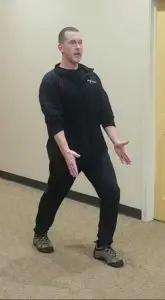
Step 1:
Keep an upright running position. Tighten your core and glute muscles. Remember, keep both feet on the ground and do not bend your front knee too much.
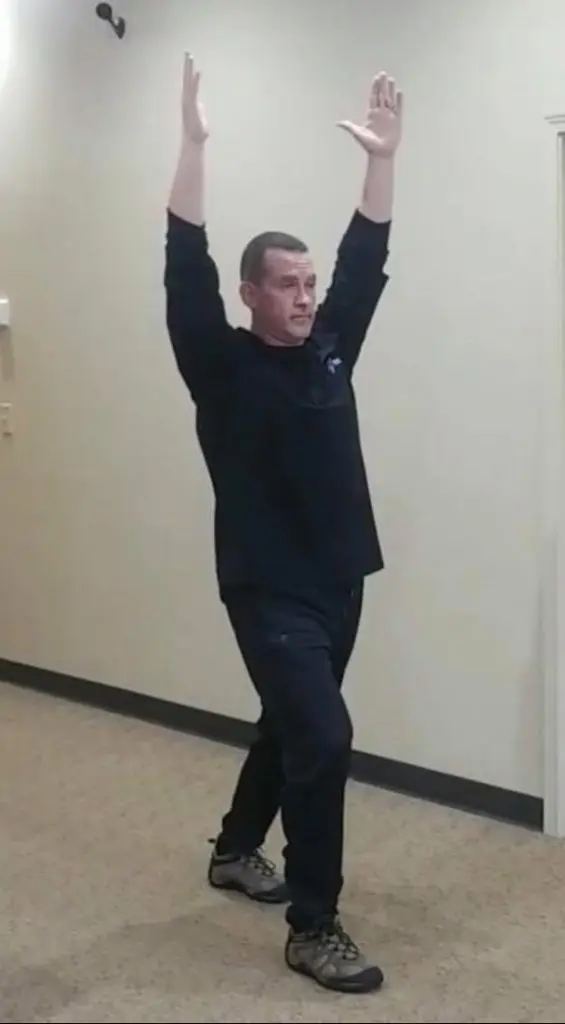
Step 2:
Take both of your arms and raise them up. Much like a referee giving a touchdown signal. Squeeze your shoulder blades together and hold. Make sure your front knee is still bent, glutes are still tight, and gaze straight ahead. Just pick a spot on the wall and stare at in.
Step 3:
Breathe in through the nose and out through the mouth. Do this for about 30 seconds or seven to eight breath cycles.
Step 4:
Bring your arms down. Straighten the legs. Step back. Repeat on other side!
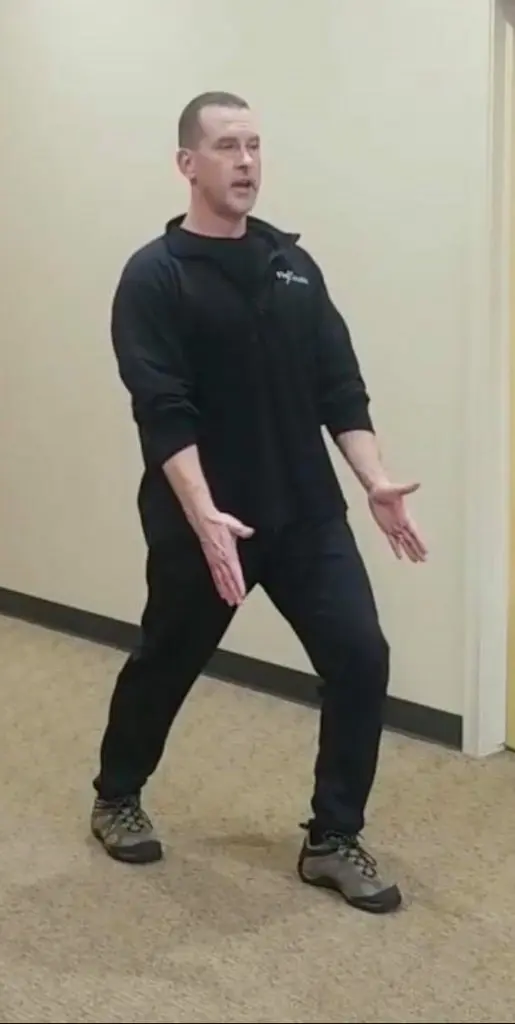
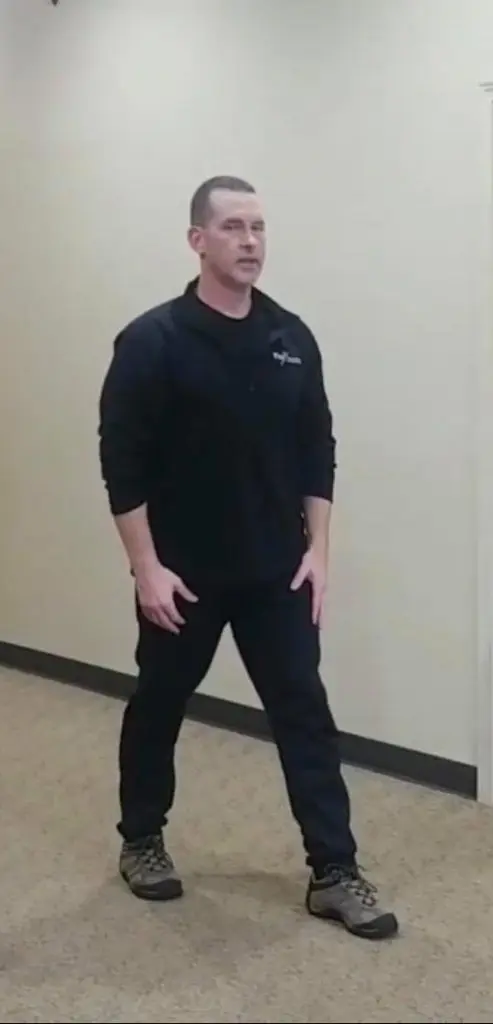
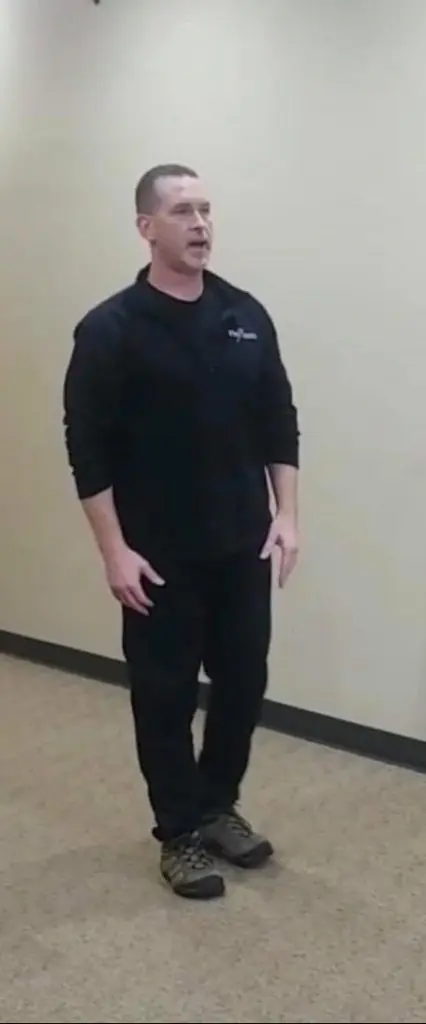
It’s just that simple. Nervous System Priming Warmups!
I like to do these before I start anything; Such as my workout or back program. These are good ways to get yourself warmed up. The key is to keep your muscles engaged, breathe in through your nose and out through your mouth.
As you get more comfortable with these movements and create your hiking trail, you can start increasing the speed and height of the swing kicks. Then, you can work on your hold time with the Warrior One.
If you do these as a regular warmup just to get your nervous system primed up, it won’t take long before you notice improved movement, balance, and coordination.
If you find it too hard at first Be Patient. Take it slow and keep the movements small until you get better. Just because you can’t do it today doesn’t mean you won’t be able to di it tomorrow!
The key is to be consistent and persistent!
If you’re trying to do it on your own, it’s not working and you want to get a good, permanent fix to your problem…… Sign up for our new back pain breakthrough exam here! All you have to do is click on the link and you can find out everything about this amazing new program we have.
As always, I will leave you with a thought-provoking quote from Rick Warren, “There is no growth without change, no change without fear or loss and no loss without pain.”
I would like you to think about that.
Until next time. Power Your Life and keep moving forward!
